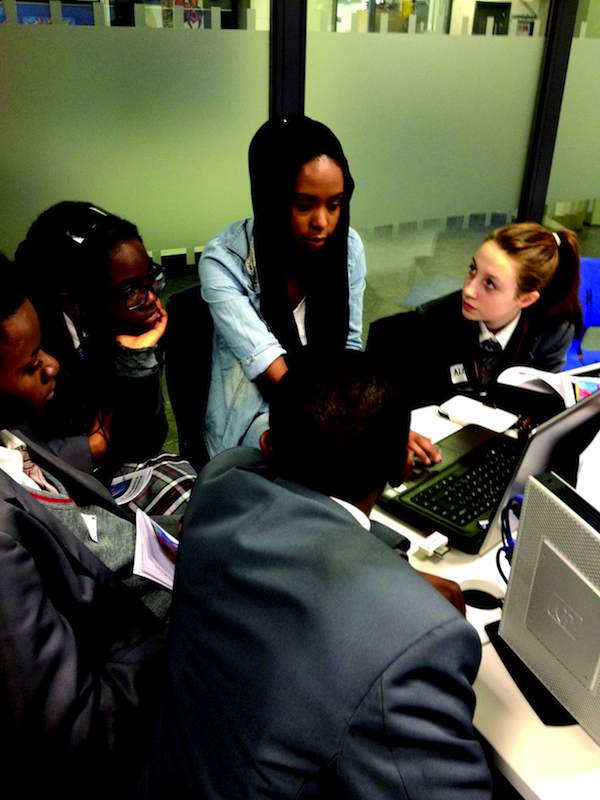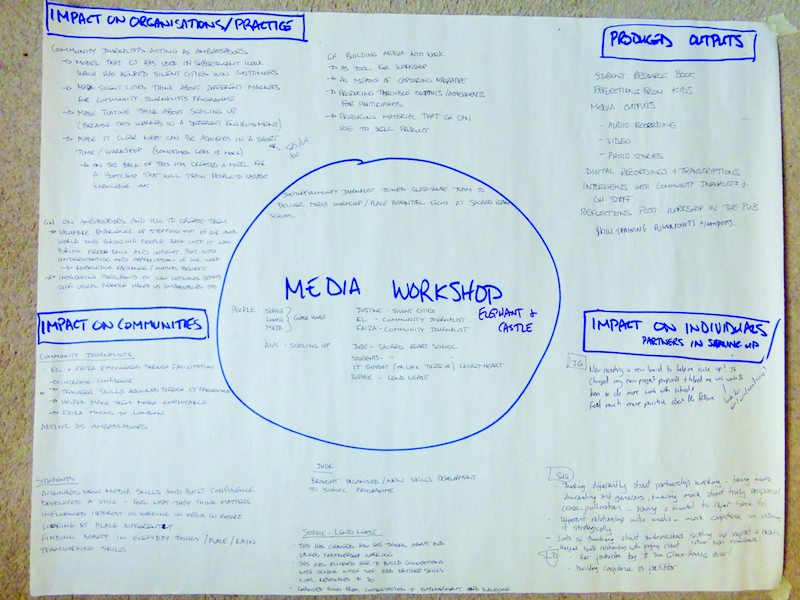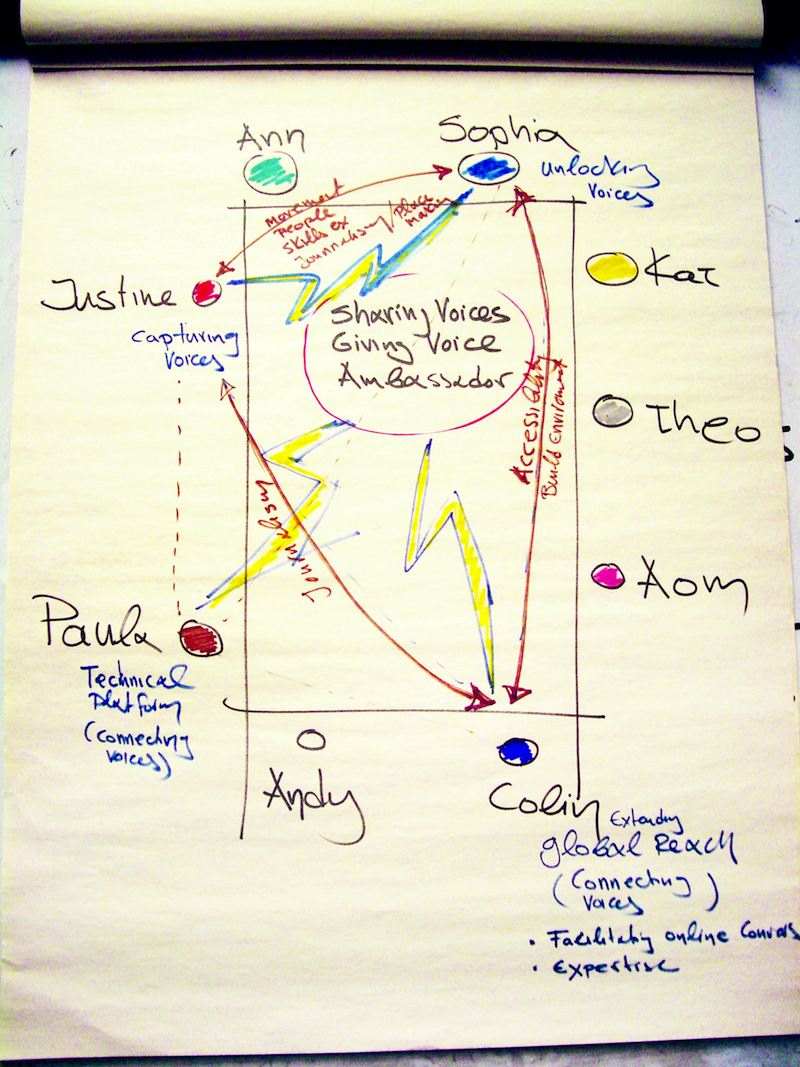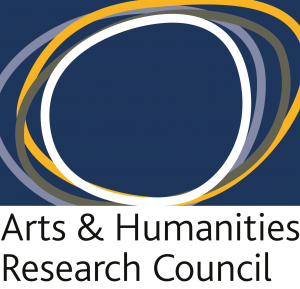Scaling up Co-design Research and Practice
Background and context

Co-design ambassadors in action
The Scaling up Co-design project was part of an AHRC/Connected Communities scheme which funded collaborations between academic partners and civil organizations in the design of research plans, as well as the delivery of research and impact activities. The context of this project is the shift towards new models for participation and engagement within creative sectors (from product design to digital media and from architecture to service design) focussed on co-creation, co-production or co-design (e.g. Sanders and Stappers, 2008; Lee, 2008). Co-design, the direct engagement of users and stakeholders in design activity throughout the life cycle of a project, is seen as a way for supporting and enhancing creativity and leading to better, more sustainable solutions. Co-design is also becoming an important theme in community research (e.g. Durose et al, 2012). Despite the existence of guidelines and principles of Community Based Participatory Research (e.g. Durham Community Research Team, 2012), co-design and co-delivery of research is still a sporadic practice in many sectors. The main aim of the project was to scale-up co-design research and practice: build capacity and extend reach and impact of community-academic partnerships by effectively using and mobilizing existing assets.
Partners
The academic partners involved were The Open University, Brunel University, Northumbria University and Sheffield Hallam University. The community partners were Blackwood Foundation, Fossbox, Flossie, One Westminster, Silent Cities and The Glass-House Community Led Design. Hannah Goraya offered consultancy in issues of inclusion and citizen engagement. The Blackwood Foundation is a registered charity focused on design and technology to support and enhance independent living for people with a disability or support need. Flossie is a network of women promoting open-source/software libre for digital arts, social innovation and open culture. Fossbox is a community interest company that advocates and specialises in open source web-based software and provides consultancy and ICT services to a wide range of community and voluntary organizations. One Westminster is a local charity transforming lives in Westminster communities by supporting local volunteering and action. Silent Cities is a grass roots social enterprise that aims to build creative environments where isolated and disadvantaged individuals and groups can flourish. The Glass-House is a national charity working to help people make better buildings, spaces, homes and neighbourhoods through independent advice, training and hands-on support.
This project focused specifically on community organizations that are involved in co-design (whether spaces, media, technologies, products or services). Such organizations themselves engage in research and co-production of knowledge with their communities but they often miss the chance to systematically reflect on the effectiveness of their methods. All academic partners in this proposal had experience engaging with such organisations in previous AHRC and CC projects and saw a great potential in sharing these experiences to generalise their knowledge and scale up their collective practice. The team adopted an asset-based approach early on in its practice. It was recognized that in order for the project to be successful and useful for everyone involved, the research aims and activities should be tied around existing interests, resources and needs.

Example impact map for cross-pollination projects
Methods
In Phase 1 of the project the objective was to unleash and build upon the intrinsic capacities of academic and community partners in order to form a common code of practice and define the research vision, activities and methods. The project workshops included filling in personal profiles, in order to express and share individual research interests, needs and expectations as well as existing resources that can be brought into the project. The team also created a map of connections between practices, skills and resources, which became the basis for defining different cross-pollination projects for Phase 2 of the project.
The main outcome of Phase 1 was a model for scaling-up which focussed on cross-pollination and fostering of co-design ambassadors. More detailed information about the project activities can be found at: http://scalingup-codesign.weebly.com/uploads/1/2/8/5/12856329/scaling-up_booklet_spreads.pdf
Phase 2 was focussed on delivery of this model. The main vehicle for reflection was frequent co-production workshops, which allowed the team to explore and propose ideas and to reflect on the outcomes and impact of activities. Each co-production workshop focussed on reflecting, analysing and evaluating different elements of the project. The identified assets and connections were continuously reviewed, and new connections and assets emerged.
The final co-production meetings focussed on reflecting on each cross-pollination project and mapping its impact on: a) the organisations involved, b) individuals within these organisations, and c) individuals from the communities we worked with. The mapping exercise also considered what the different conditions/resources were necessary for each project and captured the tangible and intangible outcomes and outputs. This activity was complementary to other methods (not focussed on assets), like an audit looking at the influence of the project in the co-design practices of the involved organisations, interviews with ambassadors and project participants, and other tools for collecting reflections (e.g. video, reflection notebooks, feedback questionnaires, moodboards etc).
Outcomes
Benefits and value created:

Mapping connections between practices, skills and resources, May 2013
The cross-pollination of media and placemaking practices extended the practices and toolkits of individual organisations and created ambassadors able to support and enable co-design practices in their own practice and communities.
The project fostered the creation of ambassadors of co-design practice, who cascade their knowledge and seek to incorporate co-design methods and ideas in their own practice. For example, community journalists from Silent Cities, have since been using the skills they learned to mentor and support others. A participant in the Flossie co-design workshop used the same model for organizing another design workshop focussed on the use of technology in family cars. She secured an impact acceleration grant from Brunel University to run the workshop and develop a new technology in collaboration with a designer. Participants in the cross-pollination activities reported the acquisition of new skills, new ways of thinking about place and design, but also confidence in their ability to be creative and become active citizens.
One of the biggest achievements of the project is to provide a springboard for other projects, this includes the Sheffield Age Better project (www.agebettersheff.co.uk), developed by Silent Cities and Hannah Goraya which aims to reduce loneliness and isolation among the older population in the city.
The close collaboration between The Glass-House and Silent Cities has demonstrated the value of media, as an enabling tool for people to explore their relationship with place, and to express their ideas and feelings in this regard. The Glass-House plans to use media as a placemaking tool in future projects.
Produced during the project by The Glass-House, with contributions from the Open University and Silent Cities, a placemaking resource book was created as an aide for students in their placemaking explorations and to provide a space for capture and reflection of their journey of creative learning. The resource book has since been embedded into The Glass-House practice, providing an additional resource for use in supporting people to interact and engage with issues surrounding their places. A bespoke version was provided to participants in a Spring 2014 young people’s placemaking programme in London.
Challenges:
As mentioned all the partners involved were already champions of co-design and collaborative working and recognized the value of building upon existing capabilities and resources. So the project did not require a culture change for partners, which might be the case with other projects. The successful funding of the Sheffield Age Better project indicates that co-design practice can become more widely accepted and used, however this requires significant investment in terms of time and resources.
The team involved civil organizations active in different areas/domains of co-design, which potentially served to minimize potential conflicts. However, it is not necessary that conflicts increase with the addition of new partners as long as there is clarity about each organisation’s needs, resources and expectations.
Although a set of shared values was present from the beginning these values did evolve and only became established because of planned reflection workshops. A shared code of practice, including ethical values as well as shared ways of working, can only be achieved if their creation is explicitly planned and supported. The co-production workshops were instrumental for creating a safe space for experimenting, sharing and reflecting.
Links:











